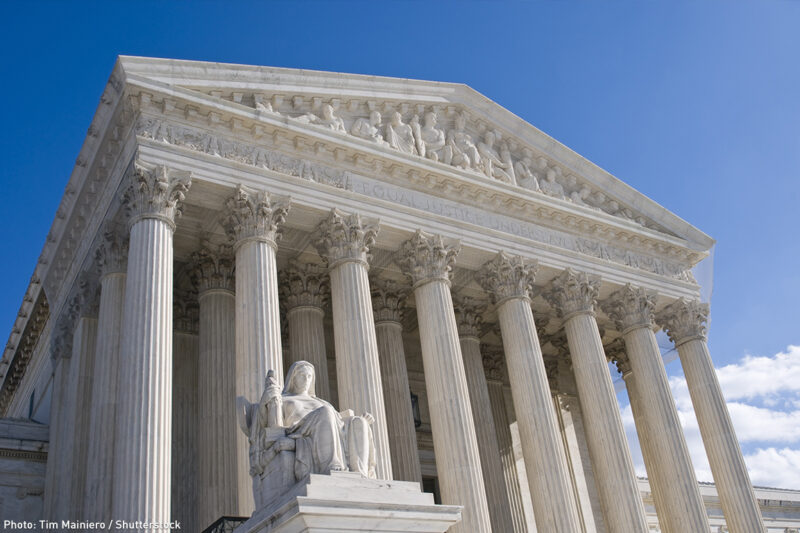Is Duane Buck Proof That the Supreme Court’s Moral Arc Is Bending Toward Racial Justice?


Thirty years ago, in McCleskey v. Kemp, the Supreme Court rejected a challenge to Georgia’s administration of the death penalty despite the fact that a study had shown that even after controlling for many other variables, those who killed white victims were 4.3 times more likely to get the death penalty than those who killed black victims. The court called racial discrimination “inevitable” and turned a blind eye to evidence of systemic bias.
In more recent years, however, the court has begun to recognize the scourge of racism in the administration of death. This past week, the court powerfully rebuked racial bias in capital sentencing, reversing a death sentence because an expert witness in the case explicitly opined that the defendant, an African-American, was more likely to commit future violence because of his race. The Supreme Court’s latest ruling is more evidence that the justices will no longer tolerate race as a decisive factor in who the state executes.
The high court made the right decision, given the outrageous testimony of psychologist Dr. Walter Quijano, which lifted the capital case of Duane Buck to new scrutiny. Testifying before a Texas court, Dr. Quijano, remarkably a witness called by the defense attorney, claimed that the defendant was more likely to be a future danger because he is Black. Similar prejudicial testimony had been introduced in seven other Texas death penalty cases. In each of the other cases, the state of Texas had on its own moved to overturn the death sentences because of the discriminatory testimony.
Inexplicably, Texas continued to seek Buck’s execution. By ruling in Buck’s favor, the majority of justices rejected a death sentence drawn from a discriminatory well and ruled, not surprisingly, that introduction of such harmful evidence against one’s own client is ineffective assistance of counsel.
Justices Clarence Thomas and Samuel Alito dissented and would have affirmed the death sentence. In his dissent, Justice Thomas tried to minimize the importance of the case, writing that the decision “has few ramifications, if any, beyond the highly unusual facts presented here.” But the truth is that the Supreme Court’s condemnation of racial bias in capital punishment in the Buck case is just the latest in a long chain of Supreme Court cases on race and the death penalty that should help spell the demise of capital punishment.
No doubt some jurists or legal scholars similarly tried to minimize the importance in each of a slew of other cases where the Supreme Court reversed death sentences because of discriminatory jury selection practices. Take, for instance, Timothy Foster’s case last year where the prosecution’s own jury selection notes reflected a roadmap of discrimination, including notes identifying each Black juror, recommending that they be struck, and describing one Black juror as the only one the prosecution might accept — if forced to “take one.” Or how about Allen Snyder’s case in 2008, in which the Louisiana prosecutor kept a cut-out on his desk of an electric chair with the faces of all of the Black men he had sent to die and treated Black and white jurors differently. And then there’s Thomas Joe Miller-El’s case from 2006, where a prosecutor with a long history of seeking to exclude Black jurors reshuffled the order of prospective jurors to whiten the crowd and overwhelming struck Black jurors.
The importance of these cases is best understood as an expression of the growing concerns of the modern Supreme Court when it comes to the role of race in the administration of the death penalty. The opinions were largely written by conservative justices: Chief Justice John Roberts in Buck and Foster, and Justice Samuel Alito in Synder. (Miller-El was written by Justice David Souter.) Like their liberal colleagues, these conservative justices were clearly troubled that racial bias was a factor in the decision regarding who lives and who dies.
The steady stream of these cases belies the argument that each is somehow unique. Quite to the contrary, they are connected in essential and important ways.
Our experience litigating racial bias in North Carolina proves that the taint of prejudice is as pervasive as it is powerful. Studies of jury selection practices in North Carolina show that prosecutors in capital cases overwhelming strike Black jurors. As in Miller-El, North Carolina prosecutors have had discriminatory training. They were shown how to avoid detection of racial bias practices. And as in Foster, prosecutors took hand written notes about Black jurors, referring, for example, to one Black juror as being “okay” because she was from a “respectable Black family.”
The Supreme Court in McCleskey may have been right when it said that discrimination was “inevitable” where discretion exists. But if that’s the case, the only way to fully sever the ties between race and the death penalty is to end it. Until then, lower courts need to understand, internalize, and implement the message the Supreme Court is clearly sending: Racial bias is intolerable in capital cases.



